- Welcome to LEC Forum.
Recent posts
#31
3-Phase Power / LTSPICE
Last post by Dave Loucks - June 13, 2016, 11:01:44 AMYou may have noticed that in several of the postings on this site I mentioned that Linear Technology offers a free SPICE program that can be downloaded from their website. The built in help talks about some tutorials, which while I haven't reviewed in detail, look great from a cursory scan:
There are also independent user groups and forums. The one I use the most is: https://groups.yahoo.com/neo/groups/LTspice/info.
As I've played around with LTSPICE, I too have created various screencast videos that show certain features. In the interest of sharing what I've learned I've included them here. Enjoy.
- Tutorial 1: http://www.simonbramble.co.uk/
- Tutorial 2: http://www.linear.com/solutions/LTspice
There are also independent user groups and forums. The one I use the most is: https://groups.yahoo.com/neo/groups/LTspice/info.
As I've played around with LTSPICE, I too have created various screencast videos that show certain features. In the interest of sharing what I've learned I've included them here. Enjoy.
- Video 1 (introduction, how to move around, how to run transient [waveform] and steady-state [AC analysis] simulation:
https://pps2.com/v/s/1/lts.php - Video 2 (how to modify the schematic [delete, moving, inserting, changing values, etc.]):
https://pps2.com/v/s/1/ltsb.php - Video 3 (LTSPICE symbols, modifying schematic to reduce simulation time)
https://pps2.com/v/s/1/ltss.php
In this video I made reference to a spreadsheet that converts between X/R and PF, computes R, X and L values based on desired system voltage and current and much more. That spreadsheet (X over R2.xls) is attached below.
#32
3-Phase Power / Re: Power Systems Rules of Thu...
Last post by Dave Loucks - May 20, 2016, 09:22:57 PMAn even later, more up-to-date version of the same presentation. I've included a video of me giving this particular version of the presentation to a class.
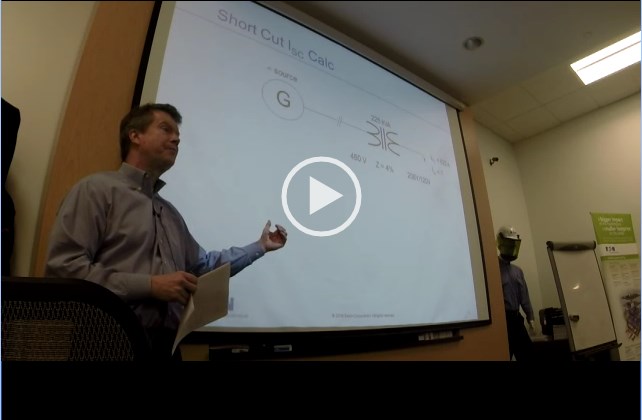
(Note: the system recording my lapel microphone switched off at about the 1 hour mark, so the remaining audio comes from the recording captured from a separate room mic)
(Note 2: There was a typo on slide 11 where it was supposed to say 86957 kVA, but instead said 86957 MVA!. Corrected in this latest version)

(Note: the system recording my lapel microphone switched off at about the 1 hour mark, so the remaining audio comes from the recording captured from a separate room mic)
(Note 2: There was a typo on slide 11 where it was supposed to say 86957 kVA, but instead said 86957 MVA!. Corrected in this latest version)
#33
3-Phase Power / Re: Power Systems Rules of Thu...
Last post by Dave Loucks - May 12, 2016, 04:57:10 PMHere's an updated version of this presentation.
#34
3-Phase Power / Low Voltage Utility Networks
Last post by Dave Loucks - May 10, 2016, 11:48:30 AMThe AC secondary network system have been used for many years (since 1920s!) to distribute electric power in the high-density, downtown areas of cities, usually in the form of utility grids. Modifications of this type of system make it applicable to serve loads within buildings. The major advantage of the secondary network system is continuity of service. No single fault anywhere on the primary system will interrupt service to any of the system's loads. Most faults will be cleared without interrupting service to any load. In fact, unlike "conventional" circuit breaker protected circuits, the network is designed so that a fault will 'burn clear' without interrupting current.
The primary protective device used in a network is called the network protector (NWP). Because the NWP is not designed to open during a fault downstream, protective relaying is different than on conventional systems connected to loop or main-tie-main systems.
I created a 30 minute narrated PowerPoint video that explains some of how a LV secondary network functions.
You can learn more by visiting the LV secondary network site at Eaton.com or by reading the power distribution engineering section within the Consulting Application Guide (CAG). Secondary networks begins on page 14 (as of the date of this entry).
The primary protective device used in a network is called the network protector (NWP). Because the NWP is not designed to open during a fault downstream, protective relaying is different than on conventional systems connected to loop or main-tie-main systems.
I created a 30 minute narrated PowerPoint video that explains some of how a LV secondary network functions.
You can learn more by visiting the LV secondary network site at Eaton.com or by reading the power distribution engineering section within the Consulting Application Guide (CAG). Secondary networks begins on page 14 (as of the date of this entry).
#35
3-Phase Power / Harmonic Trend Viewer
Last post by Dave Loucks - April 05, 2016, 01:00:51 PMStarting with firmware version 13.3.5.7 on the PXM 4/6/8K Meters a new feature was added that offers the option to generate a harmonic capture .csv file (magnitudes only H1-H128) with matching waveform at every Load Profile interval. The capture is based on a 60 cycle waveform taken at the beginning of the Load Profile interval.
Since the data is stored in a comma separated variable file format, it is easy to open in Excel and view. However since each row is a different time of a different harmonic, displaying this output file to show, for instance, the 3rd harmonic plotted over time would require sorting the data by harmonic number and then by time.
To simplify this work, we've created a spreadsheet that does this sorting for you. As a bonus, a 3D and 2D time series graphs are included.
Check out my quick tutorial on how to use this program (or click on the video image below).
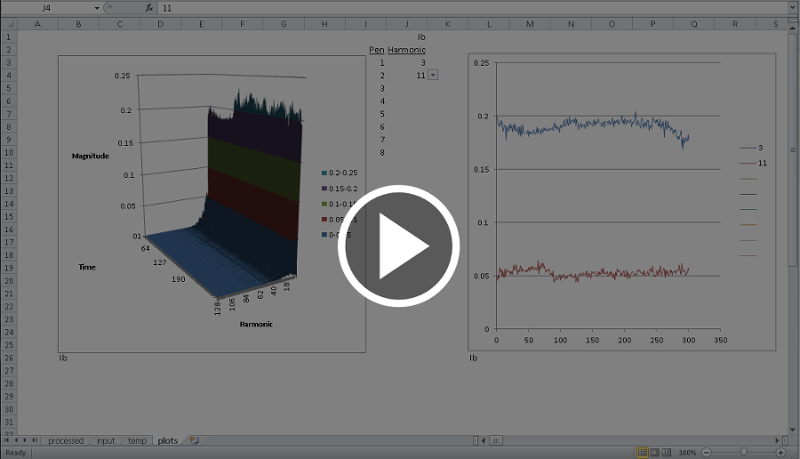
Since the data is stored in a comma separated variable file format, it is easy to open in Excel and view. However since each row is a different time of a different harmonic, displaying this output file to show, for instance, the 3rd harmonic plotted over time would require sorting the data by harmonic number and then by time.
To simplify this work, we've created a spreadsheet that does this sorting for you. As a bonus, a 3D and 2D time series graphs are included.
Check out my quick tutorial on how to use this program (or click on the video image below).

#36
3-Phase Power / Z vs R + jX fault calculations
Last post by Dave Loucks - February 02, 2016, 04:51:22 PMA very acceptable first-pass approximation of determining fault current is to use impedance (Z), or more typically per unit (%Z).
However, when two or more impedances are connected in series, the sum of the absolute values of the separate impedances isn't exactly the same as the sum of the real and reactive parts of the impedance. This can be shown graphically.
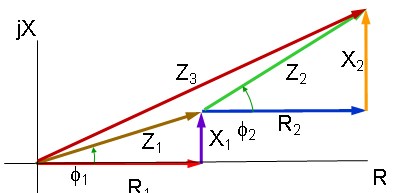
Here it is visually evident that the sum of the two impedances does not equal the actual series impedance, or mathematically:

but since:

and:

then:

Click on the image of the spreadsheet below to play back a voiced-over narration describing this issue, plus I explain how to use a spreadsheet tool to visualize the results.
Narrated explanation: https://pps2.com/v/1/ZvRX.php
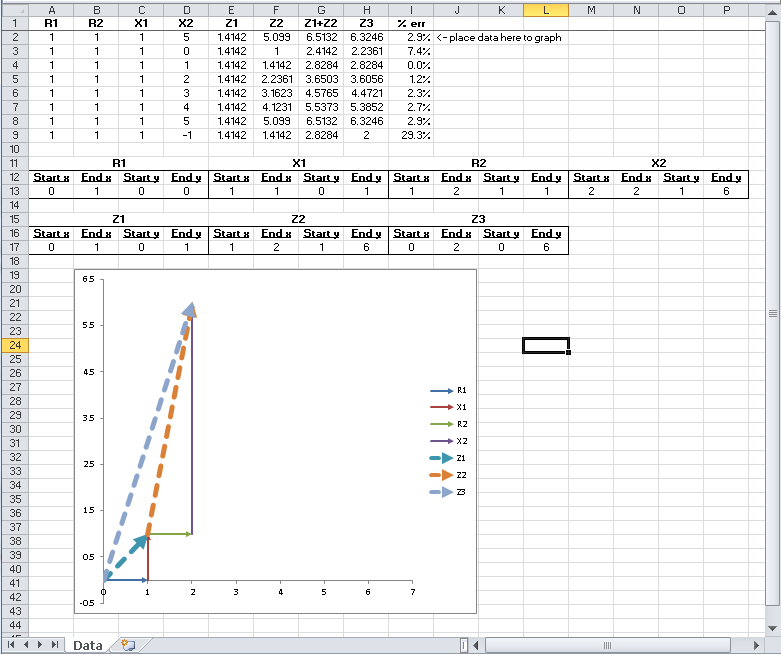
Another thing that might be useful from this video is I show how to calculate and draw these stacked vector plots within Excel. For more detail on creating phasor plots, refer to this separate article (Excel Phasor Diagram Builder)
Download the spreadsheet from the link below.
However, when two or more impedances are connected in series, the sum of the absolute values of the separate impedances isn't exactly the same as the sum of the real and reactive parts of the impedance. This can be shown graphically.

Here it is visually evident that the sum of the two impedances does not equal the actual series impedance, or mathematically:

but since:

and:

then:

Click on the image of the spreadsheet below to play back a voiced-over narration describing this issue, plus I explain how to use a spreadsheet tool to visualize the results.
Narrated explanation: https://pps2.com/v/1/ZvRX.php

Another thing that might be useful from this video is I show how to calculate and draw these stacked vector plots within Excel. For more detail on creating phasor plots, refer to this separate article (Excel Phasor Diagram Builder)
Download the spreadsheet from the link below.
#37
3-Phase Power / Spoof Video - Basic Electricit...
Last post by Dave Loucks - January 09, 2016, 04:33:48 PMDan Carnovale and I recorded a remake of a famous Cutler-Hammer spoof video entitled "Basic Electricity". The same production company was used to make the "real" videos for the Eaton Power Systems Experience Center in Warrendale Pennsylvania, so while the video was a spoof, the production values were quite good.
Enjoy.
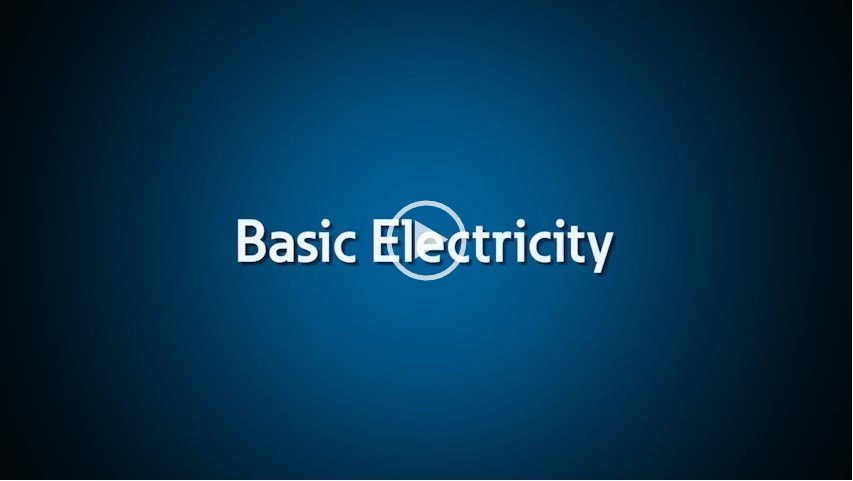
Enjoy.

#38
3-Phase Power / Differential Ground Fault Prot...
Last post by Dave Loucks - December 04, 2015, 08:46:29 AM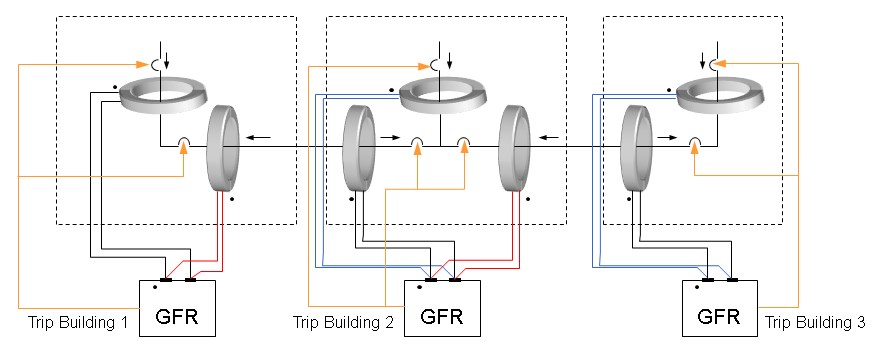
Differential ground sensing is useful in several situations:
- Multiple, grounded sources on 3-phase, 4-wire system switched with 3-pole devices (neutral is not switched)
- Current flow can reverse (this makes using ZSI more difficult to apply)
The following narrated screencast discusses how a differential ground system can be applied to isolate ground faults to within electrical switching systems (switchboards, switchgear) or even buildings. This design does not require current transformer (CT) wiring to extend outside the zone of protection.
Narrated Screencast Differential GF Sensing: http://pps2.com/v/1/dgfs.php
The simulations shown in this model are based on LTSPICE. More information on LTSPICE is available from http://www.linear.com/designtools/software/. I've created another screencast that provides some basic information on how to use LTSPICE to run the simulations shown for this differential ground fault simulation.
Narrated Screencast LTSPICE: http://pps2.com/v/1/lts.php
Download LTSPICE simulation files: https://app.box.com/s/wib5s1biu901mhlungqc1fs611zt5iay/url]
Special Note:
Occasionally a different kind of differential protection will be necessary. Refer to the following Eaton application notes for more information:
- [url=http://www.eaton.com/ecm/groups/public/@pub/@electrical/documents/content/wp027003en.pdf]Ground fault isolation with loads fed fromseparately derived grounded sources[/url]
- [url="http://www.eaton.com/ecm/groups/public/@pub/@electrical/documents/content/wp027004en.pdf"]Grounding methods in missioncritical facilities[/url]
#39
3-Phase Power / Harmonic Summation (Phase-to-P...
Last post by Dave Loucks - October 22, 2015, 12:45:35 PMHarmonic summation and cancellation can be a tricky subject. For example, why do 3rd harmonics sum in the neutral but cancel phase-to-phase?
To answer those questions, I created an Excel spreadsheet (attached at bottom of this article) that allows you to dial in various harmonics and see just what happens in the neutral as well as when measuring phase-to-phase voltage on two harmonic laden phases.
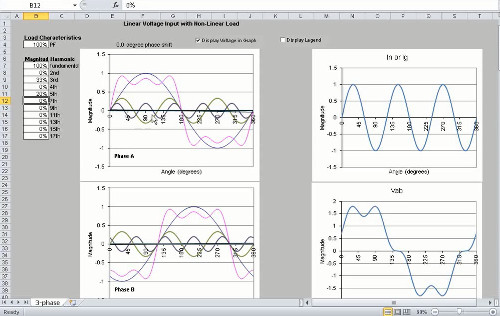
HINT: Summation and cancellation of 3rd harmonics are easier to understand when we remember that they are zero sequence. That means that each phase harmonic is in-phase with each other.
Have fun!
Here's a quick screencast tutorial: https://pps2.com/v/1/hmc.php
To answer those questions, I created an Excel spreadsheet (attached at bottom of this article) that allows you to dial in various harmonics and see just what happens in the neutral as well as when measuring phase-to-phase voltage on two harmonic laden phases.

HINT: Summation and cancellation of 3rd harmonics are easier to understand when we remember that they are zero sequence. That means that each phase harmonic is in-phase with each other.
Have fun!
Here's a quick screencast tutorial: https://pps2.com/v/1/hmc.php
#40
INCOM / IMPACC / Digitrip 520MC Communications
Last post by Dave Loucks - October 02, 2015, 02:11:27 PMI've attached the most up-to-date version of the INCOM communication protocol description I have for this product.
In particular, this includes the Extended Status Code (3 0 1) reply (code 47) to retrieve whether the breaker is in ARMS mode (Arcflash Reduction Maintenance System) or not.
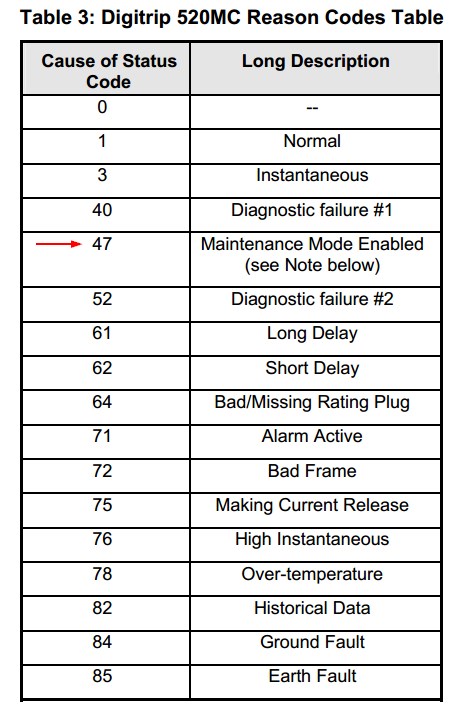
In particular, this includes the Extended Status Code (3 0 1) reply (code 47) to retrieve whether the breaker is in ARMS mode (Arcflash Reduction Maintenance System) or not.

